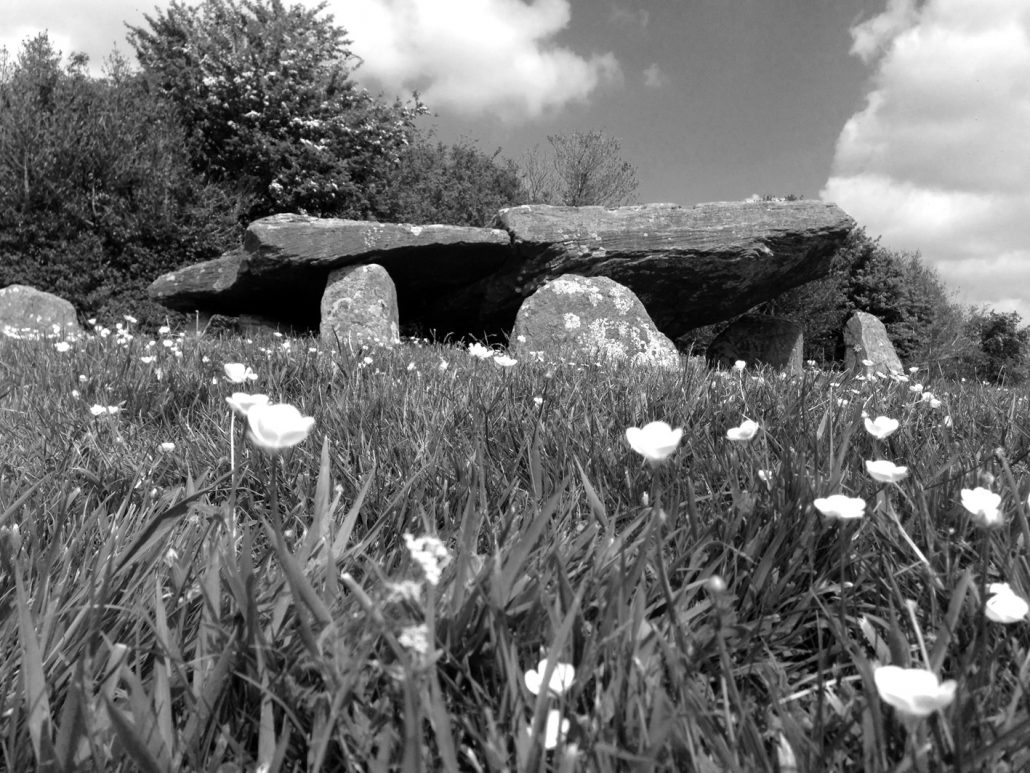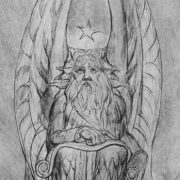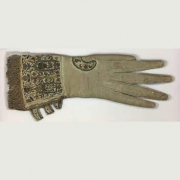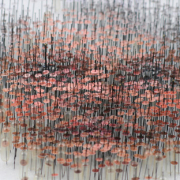MONTHLY BLOG 96, WHAT’S WRONG WITH PREHISTORY?
If citing, please kindly acknowledge copyright © Penelope J. Corfield (2018)

| Arthur’s Stone, Herefordshire, dating from c.3000 BCE: photo © Tony Belton, 2016 |
What’s wrong with ‘prehistory’? Absolutely nothing but the name. People refer to ancient monuments as ‘prehistoric’ and everyone knows roughly what is meant. The illustration (above) shows an ancient burial tomb, known as Arthur’s Stone, dating from 3000 BCE, which I visited in Herefordshire on a summer day in 2016. It did and does indeed look truly venerable. So loose terms such as ‘prehistoric’ are passable enough if used casually.
But ‘prehistory’ as a scholarly term in application to a prolonged period of human history? Seriously misleading. It implies that the long aeons of foundational human history, before the advent of literacy, somehow occurred in a separate ante-chamber to the ‘real’ deal.
The acquiring of skills in reading and writing (which occurred in different parts of the world at different times) was in fact part of a lengthy process of human adaptation and invention. Before literacy, key developments included: the adoption of clothing; the taming of fire; the invention of tools; the refinement of tools and weapons with handles; the invention of the wheel; the arrival of speech; the advent of decorative arts; the formulation of burial rituals; the domestication of animals; the development of a calendrical consciousness; the capacity to cope with population fluctuations including survival during the Ice Age; the start of permanent settlements and farming; and the cumulative mental and cultural preparation for the invention of reading and writing. Some list! The pace of change was often slow; but the changes were absolutely foundational to human history.1
In practice, of course, the skilled and ingenious experts, who study pre-literate societies, do not consider their subject to be anything other than fully and deeply historical. They use ‘prehistory’ because it is a known term of art. (Often, indeed, they may start their lectures and books with a jovial disclaimer that such terminology should not be taken literally). The idea of ‘prehistory’ was crystallised by Victorian historians, who were developing a deep reverence for the importance of written sources for writing ‘real’ history. But the differences in prime source material, although methodologically significant, are not fundamental enough to deprive the foundational early years of the full status of history. And, in fact, these days historians of all periods study a range of sources. They are not just stuck in archives, reading documents – important as those are. If relevant to their theme, historians may examine buildings, art, artefacts, materials, bones, refuse, carbon datings, statistical extrapolations, and/or genetic evidence (etc etc), just as do archaeologists and ‘prehistorians’.
Moreover, conventional references to ‘prehistory’ have now been blind-sided by the recent return to diachronic (through-time) studies of what is known as Big History. This approach to the past takes as its remit either the whole of the cosmos or at least the whole lifespan of Planet Earth.2 It draws upon insights from cosmologists and astro-physicists, as well as from geologists and biologists. After all, a lot of history had indeed happened before the first humans began to walk. So what are the millennia before the advent of homo sapiens to be entitled? Pre-prehistory? Surely not. All these eras form part of what is sometimes known as ‘deep history’: a long time ago but still historical.
So why has the misleading term ‘prehistory’ survived for so long? One major reason lies in the force of inertia – or institutional continuity, to give it a kinder name. ‘Prehistory’ has prevailed as an academic terminology for over a century. It appears in the names of academic departments, research institutions, learned societies, job descriptions, teaching courses, examination papers, academic journals, books, blogs, conferences, publishers’ preferences for book titles, and popular usages – let alone in scholars’ self-definitions. Little wonder that renaming is not a simple matter. Nonetheless, subjects are continuously being updated – so why not a further step now?
I was prompted to write on this question when three congenial colleagues asked me, a couple of years ago, to contribute to a volume on Time & History in Prehistory (now available, with publication date 2019).3 I was keen to respond but hostile to the last word in their book title. My answer took the form of arguing that this specialist section of historical studies needs a new and better name. I am grateful to the editors’ forbearance in accepting my contribution. It contributes to debates elsewhere within the volume, since criticising the terminology of ‘prehistory’ is not new.
Apart from the lack of logic in apparently excluding the foundational experiences of the human species from ‘real’ history, my own further objection is that the division inhibits diachronic analysis of the long term. A surviving relic from ‘prehistoric’ times, like Arthur’s Stone, has a long and intriguing history which still continues. At some stage long before the thirteenth century CE, the modest monument, high on a ridge between the Wye and Golden Valleys, became associated in popular legend with the feats of King Arthur. (Did he win a battle there, rumour speculated, or slay a giant?) That invented linkage is in itself a fascinating example of the spread of the Arthurian legend.4
The site later witnessed some real-life dramas. In the fifteenth century, a knight was killed there in a fatal duel. And in September 1645 the embattled Charles I dined at the Stone with his royalist troops. Perhaps he intended the occasion as a symbolic gesture, although it did not confer upon him sufficient pseudo-Arthurian lustre to defeat Cromwell and the Roundheads.
For the villagers in nearby Dorstone and Bredwardine, Arthur’s Stone at some stage (chronology uncertain) became a venue for popular festivities, with dancing and ‘high jinks’ every midsummer. This long-standing tradition continued until well into Victorian times. As a sober counter-balance, too, the local Baptists in the nineteenth and twentieth centuries organised an ecumenical religious service there each June/July. Living witnesses remember these as occasions of fervent al fresco hymn-singing. Implicitly, they were acknowledging the Stone’s sacral nature, whilst simultaneously purging its pagan associations.
When visiting the Stone myself in 2016, I met by chance a local resident, named Ionwen Williams. In a stroke of research serendipity, we got chatting and she zestfully recounted her memories, as a child before World War II, of joining her schoolfellows to sing hymns at the site each midsummer. This experience and many later visits confirmed for her the special nature of the place. I did not for a moment doubt her memories; but, as a prudent historian, thought it helpful to cross-check – and found them corroborated.
It is abundantly clear that, throughout its five thousand years of existence, Arthur’s Stone has had multiple meanings for the witnessing generations. At one sad stage in the late nineteenth century, it was pillaged by builders taking stones for new constructions. But local objections put a stop to that; and it is now guarded by English Heritage. It is utterly historic, not separately ‘prehistoric’: and the same point applies to all long-surviving monuments, many of which are much bigger and more famous than Arthur’s Stone. Furthermore, deep continuities apply to many other aspects of human history – and not just to physical monuments. For example, there are many claims and counter-claims about the foundations of human behaviour which merit debate, without compartmentalising the eras of pre-literacy from those of post-literacy.
Lastly, what alternative nomenclature might apply? Having in the first draft of my essay rebuked the specialists known as ‘prehistorians’ for not changing their name, I was challenged by the editors to review other options. Obviously it’s not for one individual to decide. It was, however, a good challenge. In many ways, these early millennia might be termed ‘foundational’ in human history. That, after all, is what they were. On the other hand, ‘foundational history’ sounds like a first-year introduction course. Worthy but not very evocative. My essay reviews various options and plumps for ‘primeval’ history. That term not only sounds ancient but signals primacy: in human history, these years came first.5 The contributions within the volume as a whole are questioning and challenging throughout, as they analyse different aspects of Time and, yes, ‘History’. It is a pleasure to join these essays in thinking long.6
1 For an enticing introduction (apart from one word in its subtitle), see C. Gamble, Timewalkers: The Prehistory of Global Colonisation (Sutton: Stroud 1993).
2 For an introduction, see D.G. Christian, Maps of Time: An Introduction to Big History (U. of California Press: Berkeley, 2004).
3 S. Souvatzi, A. Baysal and E.L. Baysal (eds), Time and History in Prehistory (Routledge: Abingdon, 2019).
4 N.J. Lacy (ed.), The New Arthurian Encyclopaedia (Garland: New York, 1991).
5 P.J. Corfield, ‘Primevalism: Saluting a Renamed Prehistory’, in Soutvatzi, Baysal and Baysal (eds), Time and History, pp. 265-82. My own interest in ‘long ago’ was sparked when, as a teenager, I read a study by Ivar Lissner, entitled The Living Past (Cape: London, 1957): for which see P.J. Corfield, ‘An Unknown Book Which Influenced Me’ BLOG no.14 (Nov. 2011).
6 On this theme, see J. Guldi and D. Armstrong, The History Manifesto (Cambridge University Press: Cambridge, 2014); P.J. Corfield, ‘What on Earth is the “Temporal Turn” and Why is it Happening Now?’ BLOG no.49 (Jan. 2015); and idem, ‘Thinking Long: Studying History’, BLOG no.94 (Oct. 2018), all BLOGs available on www.penelopejcorfield.com/monthly-blogs.
For further discussion, see Twitter
To read other discussion-points, please click here
To download Monthly Blog 96 please click here










